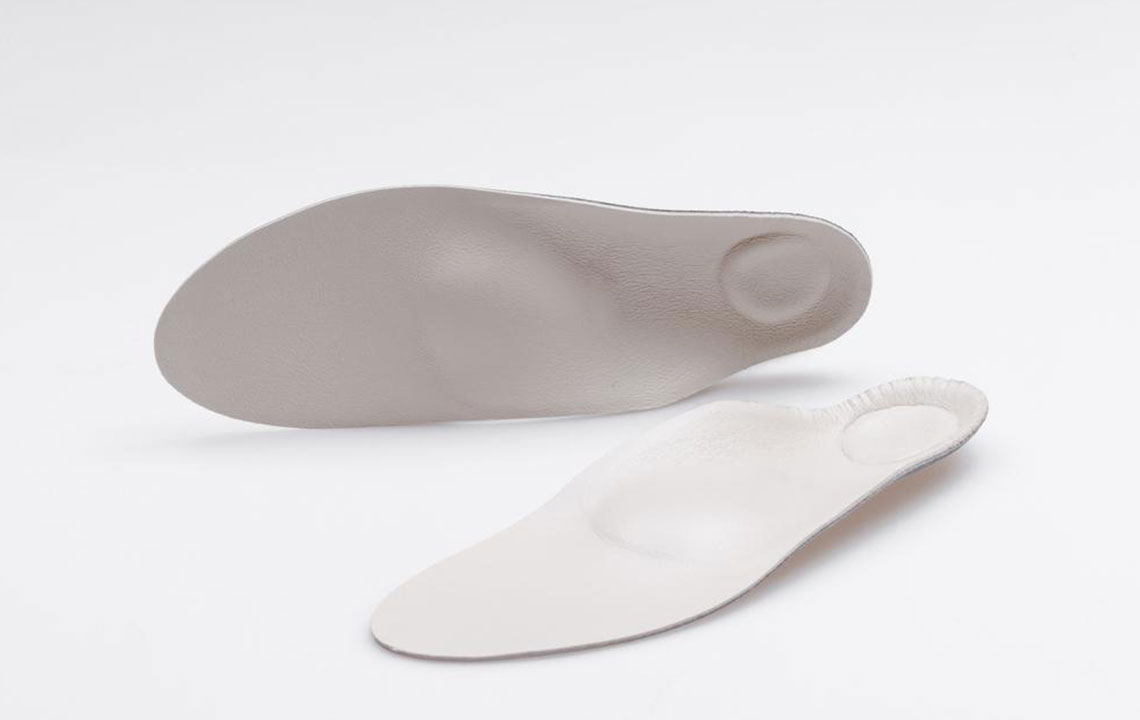Help kick plantar fasciitis to the curb with insoles
Injuries to the foot can make day-to-day tasks difficult to perform. Since your feet bear the brunt of your weight, they need to be strong and healthy. One of the most common feet complaints is plantar fasciitis. It is estimated that about one in 10 people develop it. The US alone witnesses over two million people receiving treatment. The condition is common in runners, although it can occur in anyone.
What exactly is plantar fasciitis?
Plantar fasciitis is a type of inflammation of the plantar fascia, the tissue that connects toes to the heel bone. Pain occurs in the heel and tends to increase in the morning after your feet receive prolonged rest.

Certain risks factors such as walking barefoot, having weak foot muscles, arthritis and a sudden increase in physical activity can accelerate plantar fasciitis.
Benefits of insoles
Shoes usually have insoles to cushion the feet. However, they may not do enough to reduce the impact on heels, especially when you are physically active. This is where insoles come into play. The advantages of using insoles are listed below:
Redistributes pressure
Insoles for plantar fasciitis designed to redistribute pressure across your feet. Instead of the heel enduring most of the weight, the entire foot does. This, in turn, helps reduce the risk of injury and keeps your feet more comfortable.
Absorbs shock
Walking, jogging, and running place a lot of impact on the feet. Without adequate cushioning and support, there is a threat of injury. Insoles for plantar fasciitis absorb shock and take the pressure off the feet.
Controls pronation
Pronation is the way your feet roll inward when you move, which helps offset shock. If you over-pronate, there is a greater chance of developing plantar fasciitis. Insoles for plantar fasciitis help in controlling pronation to align the feet properly. You get relief from pain and can go about daily life better.
Minimizes bacteria
Bacteria can thrive nearly anywhere, and your feet are no exception. While insoles for plantar fasciitis do not eliminate bacteria, they can help control it.
Provides comfort
In addition to all these benefits, insoles make shoes more comfortable to wear. They minimize pain and discomfort and provide a cushioned bed for them to rest.
How to choose your insoles
Many brands bring out good insoles for plantar fasciitis. Here are some factors to look for before you zero in on a pair of insoles.
Get insoles that are the right size. Most are in size range so that you can trim them to fit your shoes.
Insoles for plantar fasciitis available in different arch heights. You can get neutral-medium, low-medium, or high arch styles to suit your need. Identify the arch type that you have before making a purchase. Wearing insoles with the wrong arch can not only be painful but also leads to wasting money.
Foam and gel are common insole materials. Foam insoles are great for relieving pressure and for providing support to the feet. Gel also has similar benefits but is favored for its shock absorption. You can get leather insoles too that provide good cushioning and cork that offers sound support.
Managing plantar fasciitis
Aside from insoles, plantar fasciitis can be managed with physical therapy that consists of various exercises. They work to stabilize heels and strengthen leg muscles. Depending on how severe the pain is, a doctor may recommend injections or Tenex where scar tissue is removed using a minimally invasive procedure. You can do a few things to reduce the strain on your feet too. Avoid running on an uneven or hard ground and wear shoes with insoles that cushion and support your feet even when walking.You can also look for specially designed shoes meant for plantar fasciitis. Stretch your feet whenever possible to relieve strain.
Insoles for plantar fasciitis are a cost-effective way to decrease discomfort and pain on your feet. They are widely available and come in various styles, sizes, and materials. If you are not sure which one to buy, consult a podiatrist who can recommend the best one, based on the severity of your condition.


